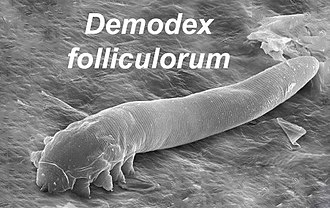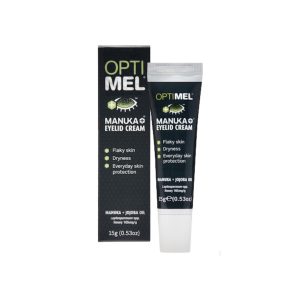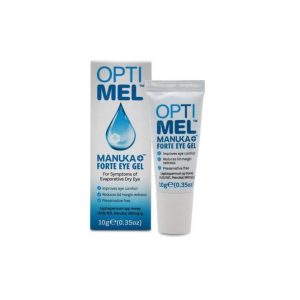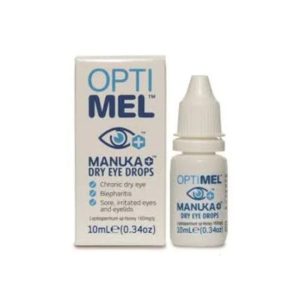Are you struggling with persistent dryness, irritation, or a nagging discomfort in your eyes that seems unrelenting? If this resonates with you, it’s possible that you’re among countless individuals facing a chronic dry eye condition, potentially linked to Demodex mites. These minuscule, eight-legged creatures are a natural component of the human skin biome, particularly prevalent in the sensitive regions surrounding the eyes and eyelids. However, when their populations surge beyond normal levels, they can trigger inflammation, exacerbating the symptoms associated with dry eye syndrome, leading to significant discomfort and distress.
If you've been grappling with ongoing and unexplained dry eye challenges, it’s vital to consider whether Demodex mites could be a crucial factor contributing to your symptoms. In this detailed guide, we will assist you in recognizing the signs of a Demodex infestation, clarify the complex relationship between these mites and dry eye disease, and introduce effective treatment options aimed at managing their population while providing significant relief from your discomfort.

Identifying the Unique Symptoms of Demodex Blepharitis
Individuals suffering from Demodex Blepharitis or an excessive presence of these mites frequently encounter a variety of distinctive symptoms. Some of the common manifestations include:
- Burning, stinging, or gritty sensations in the eyes, especially noticeable towards the end of the day.
- Unexplained excessive tearing or watery eyes that are not triggered by allergies.
- Red, inflamed eyelids accompanied by irritation of the skin surrounding the eyes.
- Crusty, dandruff-like buildup along the lashes and lid margins, often appearing as collarettes.
- Heightened sensitivity to light, resulting in a constant urge to squint.
- Episodes of fluctuating blurred vision throughout the day.
Many individuals endure these dry eye symptoms for years, often unaware that an infestation of Demodex mites could be a significant underlying cause. Recognizing these symptoms is a crucial step in effectively addressing the core issue and pursuing appropriate treatment to alleviate discomfort.

Understanding the Connection Between Demodex Mites and Dry Eye Symptoms
Have you ever wondered how these tiny organisms can trigger such distressing dry eye symptoms? Demodex mites thrive on the oils and cells present on the skin, particularly within the hair follicles of your eyelashes. As they feed, they produce waste products, eggs, and remnants of deceased mites, which gradually accumulate along the eyelid margins. This buildup creates a thick layer of debris and a bacterial biofilm that can obstruct the delicate oil glands essential for maintaining optimal eye health.
When these oil glands fail to release sufficient oils, it leads to the rapid formation of dry patches on the eye's surface. This oily tear film is critical for preventing the rapid evaporation of the watery tears that keep our eyes moist and comfortable. The inflammation caused by the blockage only intensifies eye irritation, redness, and the uncomfortable gritty sensation typically linked to dry eye conditions.
Comprehending the Life Cycle of Demodex Mites for Effective Treatment
Gaining insight into the life cycle of Demodex mites is essential for implementing effective treatment strategies. These mites progress through distinct stages: egg, larva, nymph, and adult, within a life cycle that spans approximately 14 to 21 days. They are most active during the night, leaving their hair follicles to mate and lay new eggs on the skin's surface.
This nocturnal behavior indicates that the optimal time to apply Demodex treatments is during the evening, just before bedtime. Targeting the mites when they are most active can significantly enhance the effectiveness of your treatment. However, due to their rapid reproductive capabilities, any remaining mites can quickly repopulate, making ongoing treatment essential over several weeks or even months to achieve lasting relief from symptoms.
Proven Strategies for Managing Demodex-Related Dry Eye Symptoms
If your optometrist confirms a high count of Demodex mites through eyelash sampling or microscopic examination, they may suggest a range of treatment options to combat the infestation:
1. Utilizing Tea Tree Oil Eyelid Wipes and Scrubs for Effective Relief
Products infused with tea tree oil showcase remarkable antimicrobial and antiparasitic properties, making them highly effective in eradicating mites. These formulations can effectively remove surface mites, break down collarettes produced by these pests, and help dislodge buried mites, rendering them more susceptible to treatment.
While tea tree oil is powerful against mites, it can induce stinging upon application and may be cytotoxic to healthy cells, potentially inflaming and aggravating symptoms for some patients. Regular use of tea tree oil eyelid wipes or scrubs before bedtime can progressively diminish the mite population. A notable example of an effective tea tree oil treatment is OcuSoft Oust Foam, which is particularly beneficial for managing blepharitis primarily triggered by Demodex mites.
2. Implementing Gentle Hypochlorous Acid Lid Hygiene Sprays for Safe Application
Hypochlorous acid is a naturally occurring substance produced by our immune system and acts as an effective antimicrobial agent. It is gentle on the eyes, does not cause stinging, and is safe for our cells.
Disinfecting lid sprays and cleansing foams containing hypochlorous acid not only eliminate mites but also reduce inflammation, providing significant relief from symptoms. Applying these solutions to the lash lines before bed can effectively eradicate mites and their debris. Many of these products carry a distinct odor reminiscent of chlorinated pool water. Popular hypochlorous acid solutions include Ocusoft Hypochlor Spray and Avenova.
Among these, Ocusoft Hypochlor Foam is frequently recommended due to its superior value and extended shelf life after opening, making it a practical choice for ongoing management and treatment.
3. Discovering the Benefits of Manuka Honey Solutions for Eye Health
Recent studies suggest that Manuka Honey solutions could be as effective as 50% tea tree oil against Demodex, although further research is needed for full validation. Despite a potential slight sting upon application, Manuka Honey is generally less irritating than tea tree oil and shows excellent efficacy against other types of blepharitis. It is non-cytotoxic and less likely to provoke inflammation in the eyelids.
Patients often report that any initial sting is well worth it, as they frequently experience substantial relief afterward. Manuka Honey solutions are available in gel form (such as Optimel Forte, which is more effective but may sting more) and as drops (like Optimel Drops, which are easier to apply and sting less).
4. Addressing Severe Demodex Infestations with Oral Anti-Parasitics
In instances where Demodex overpopulation is severe and persistent, healthcare professionals may choose to prescribe oral antiparasitic medications. For instance, formulations such as Ivermectin in pill form have proven effective in managing these infestations. Furthermore, weekly doses of oral tea tree oil supplements taken over several months can assist in maintaining mite levels in check while offering long-lasting relief from the distressing symptoms associated with this condition.
5. Utilizing Advanced Professional Treatments for Comprehensive Demodex Management
Many eye clinics provide intense in-office treatments specifically tailored for Demodex management, employing specialized products like Oust Demodex Cleanser Swabstix or a handheld electric device known as BlephEx.
The Oust Demodex Cleanser Swabstix offers targeted treatment options that can effectively help reduce the impact of these troublesome mites, enabling you to regain comfort and enhance overall eye health.
The Article: Demodex Mites Linked to Chronic Dry Eye Issues first appeared on https://writebuff.com.
The Article Demodex Mites and Their Connection to Chronic Dry Eye Was Found On https://limitsofstrategy.com
The Article Demodex Mites: Link to Chronic Dry Eye Explained First Appeared ON
: https://ad4sc.com





I found your discussion about chronic dry eye and its potential link to Demodex mites to be particularly enlightening! I’ve personally dealt with dry eye for quite some time now, and it can be a frustrating experience. It’s interesting how something as small as a mite can have such a significant impact on our eye health and overall comfort.
It’s great to hear that you found the connection between chronic dry eye and Demodex mites interesting. It really does highlight how intricately linked our body systems are, even in ways we might not initially consider. Dry eye can be such an everyday irritation, and discovering that something so tiny could be part of the problem definitely adds a layer to our understanding.
Your exploration of the connection between Demodex mites and chronic dry eye syndrome is both enlightening and incredibly relevant, especially for many of us who may not have considered these mites as a contributing factor to our discomfort. Personally, I’ve experienced bouts of dry eyes myself, and it’s remarkable how such small organisms can have such a profound impact on our well-being.
It’s interesting how something so tiny can disrupt our daily lives, right? Many people are completely unaware of the role Demodex mites play in eye health. It makes sense that they could contribute to chronic dry eye syndrome, given how often we overlook these little guys as a potential source of irritation.
I’m glad you found the article enlightening! If you’re looking to further understand how to manage dry eyes effectively, check out this helpful resource that dives deeper into the topic.
https://oldicom.net/octopus
You’re right; it’s fascinating how these tiny mites can have such a significant impact on our health, especially something as essential as our vision. I remember reading about how many people don’t even know they have Demodex mites living on their skin until they’re experiencing persistent issues. It’s almost like a reminder that our bodies harbor all sorts of little ecosystems that we don’t consciously pay attention to.
It’s fascinating how our understanding of such tiny creatures like Demodex mites can shift our perspective on health conditions like chronic dry eye syndrome. It’s easy to overlook the microscopic world and the roles these organisms play in our overall well-being. Your experience with dry eyes resonates with many, and it’s a reminder of how interconnected our body systems can be.
I found some helpful makeup tips that cater specifically to sensitive skin and dry eyes, which might resonate with your experience and provide some relief.
‘Makeup Tips for Sensitive Skin and Dry Eyes’
https://oldicom.net/makeup-tips-for-sensitive-skin-and-dry-eyes/.
It’s great to hear that my exploration resonated with you. The world of Demodex mites really is fascinating—such tiny creatures playing a significant role in our comfort. It’s easy to overlook their presence, but they can influence our eye health more than many realize.
I’ve always found the topic of dry eye intriguing, especially since so many people seem to experience it without a clear understanding of what’s really going on. Your insight into the connection between Demodex mites and dry eye syndrome is really thought-provoking. It kind of sheds light on a condition that people might just chalk up to environmental factors or long hours staring at screens, which is often the go-to culprit these days.
It is definitely a complex topic, and you’re right about how often dry eye syndrome is brushed off as just another side effect of our modern lifestyle. It’s interesting how we tend to think of environmental factors or screen time as the main culprits, but there’s so much more beneath the surface, like the potential role of Demodex mites. I remember reading about how these tiny creatures can disrupt the balance of our eyelid flora, and it really made me rethink what might be contributing to my own dry eye symptoms.